| Which brought us to Fort
Nelson and its heritage museum. The balls on the tree trunks are galls.
Nobody is quite sure why they grow but if you get one you get many. They
seem to be popular as decorative items for such things as porch supports and
gateposts. Although Canadians measure distances in kilometres, the
Americans built the Alaska Highway in miles. Over the years the mileposts
have become incorrect as distance markers as the road is re-routed, but they
are of historical interest. This is milepost 300 from Dawson Creek. | 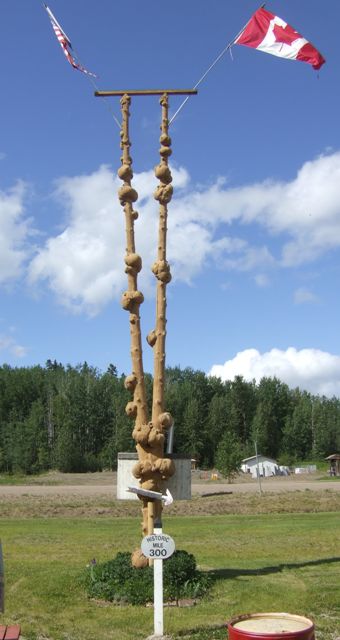 |
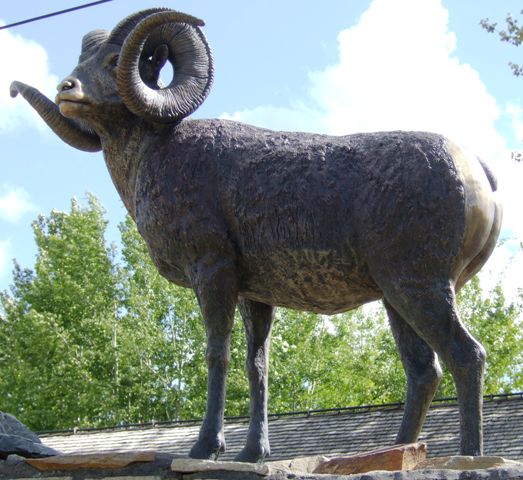 |
This is a bronze statue of the Chadwick Ram, the largest stone sheep
ever found. It was taken in 1936 in the Muskwa Valley. |
| This was a 10 year old
stone sheep ram and is on loan to the museum. They are indigenous to
northern BC and Southern Yukon. | 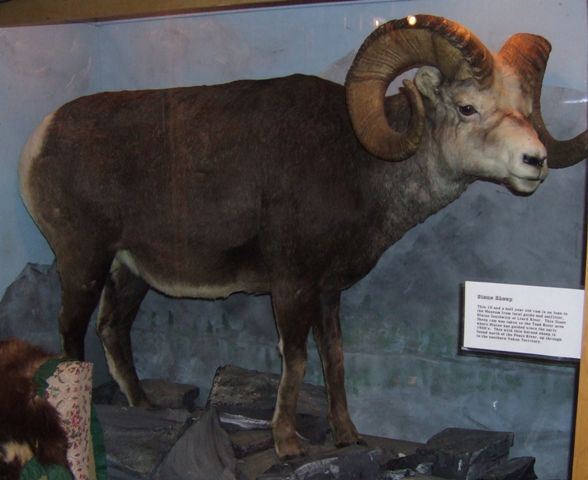 |
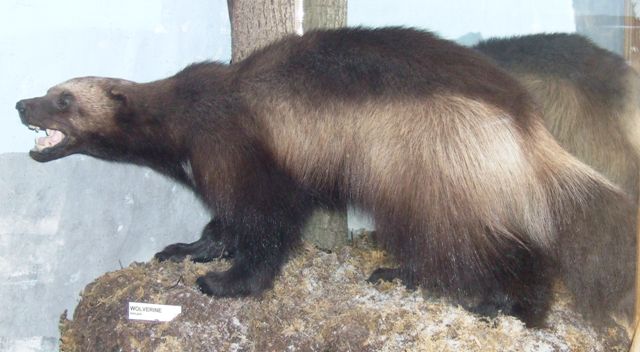 |
Also in the wildlife display in the museum is this wolverine, a rare but
nasty animal. |
| This is a timber wolf.
They hunt in packs and can kill a full grown moose. They are Nature's
executioners. | 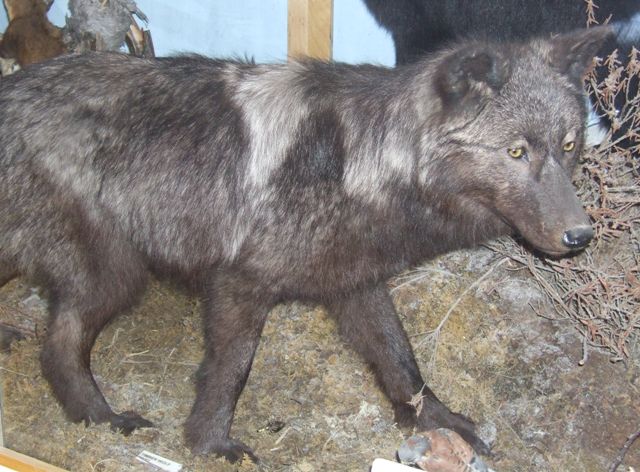 |
 |
A female white moose. Only the males have antlers. |
| A collection of saws and
axes - timber is a huge industry here. | 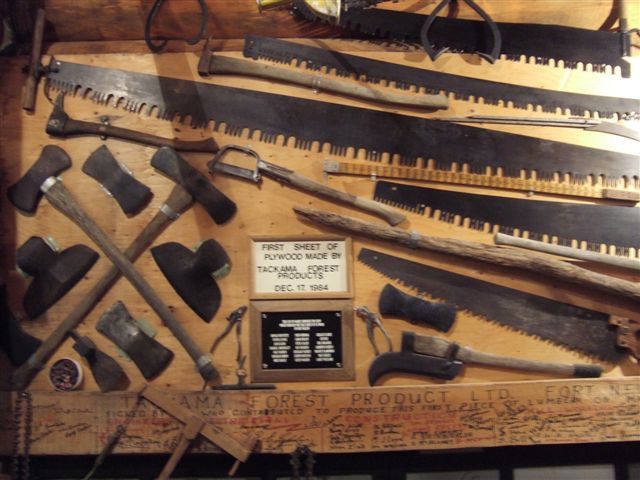 |
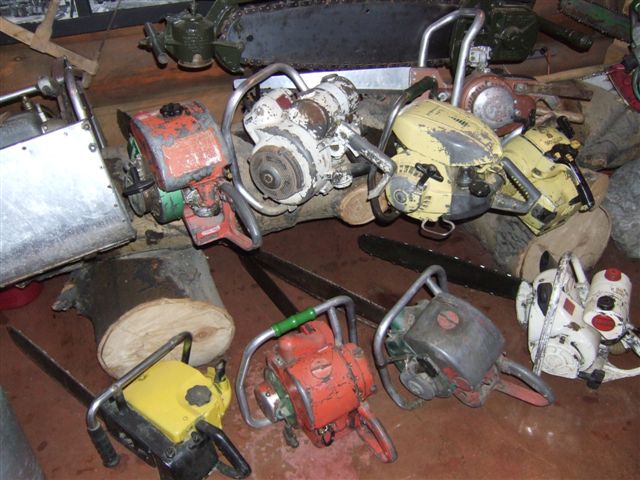 |
And a collection of chainsaws. Some had much bigger blades than I have ever
used. |
| These museums always seem
to have a huge collection of the oddest things. This is a crankshaft from a
huge 3000kW electricity generating engine along with its pistons which cost
$5000 each. It ran for almost 13 years before it failed. The colourful
items are drill bits. | 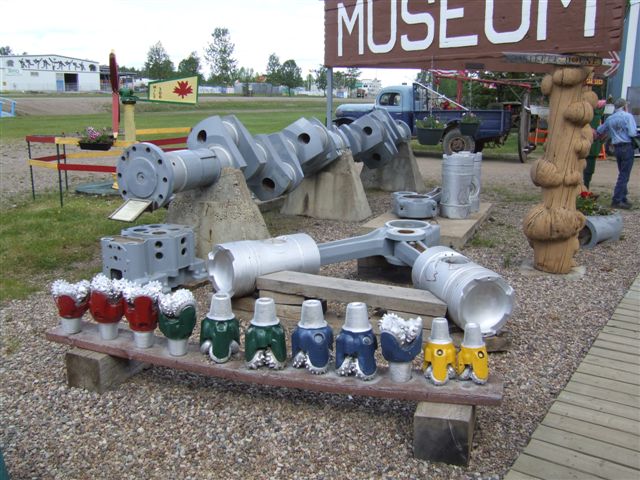 |
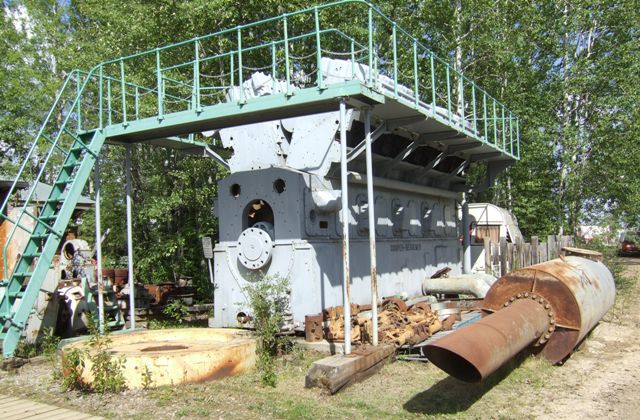 |
Another generator or maybe this was the rest of the one the crankshaft came
from. It was a Cooper Bessemer and rated at 4200hp and built in 1957. It
came to Fort Nelson in 1969. |
| Cars seem to be one of
the most collectable items and they are usually in good condition. Sadly I
don't always note what they are. I think this one dates from either 1909 or
1921. | 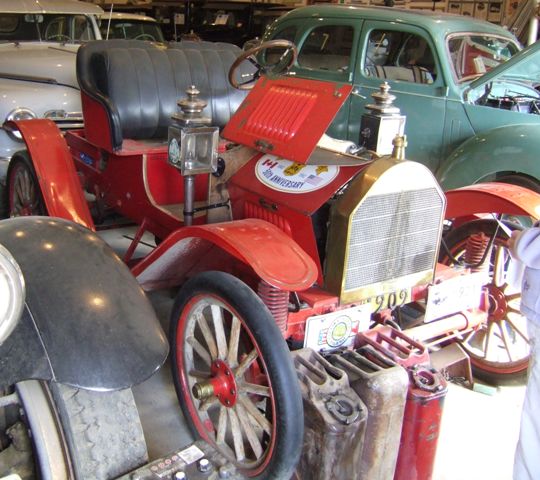 |
 |
This army truck almost certainly dates from 1942. It is a Ford 1500WT and
had a flat head V8 engine, four speeds and four wheel drive. It is odd that
cars had advanced much further than trucks by that date. |
| This is a 1939 Packard
120. It is a 1701 series with an inline 8 cylinder engine of 282 cu in
producing 133hp. It had hydraulic drum brakes all round. | 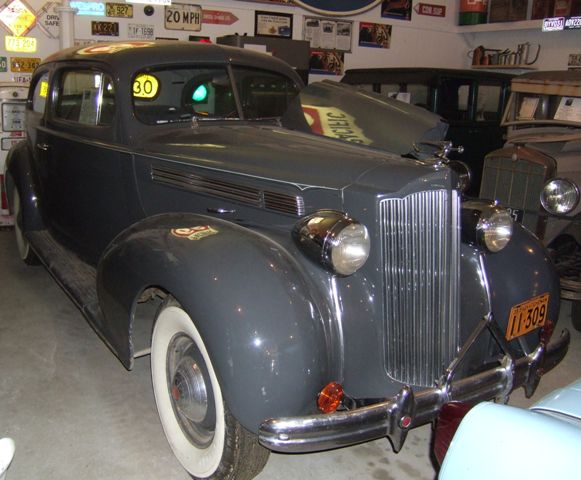 |
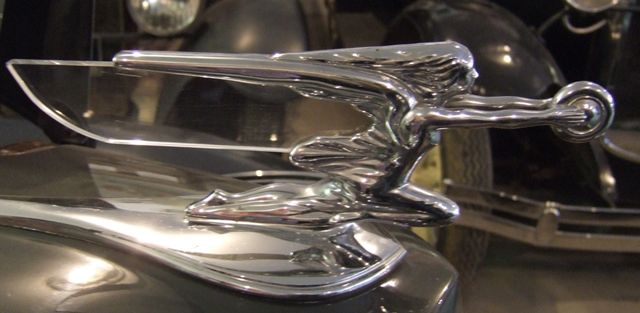 |
The mascot on the front gave form to the speed it was supposedly capable of.
Mascots like these stopped being fitted after somebody sued Mack for damage
done by one of their 'bulldogs'. |
| Not quite as large or as
chromed as some American engines I've seen but just as cared for. | 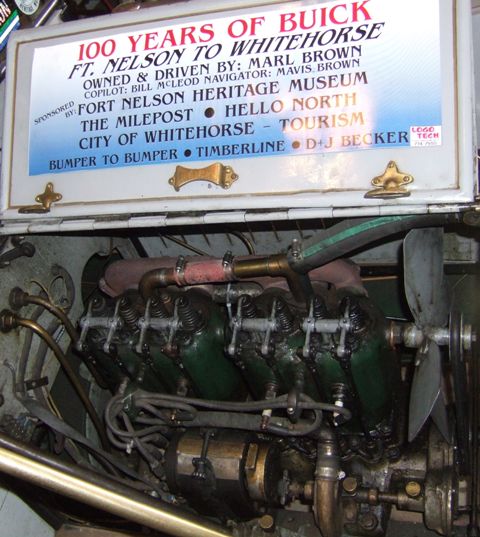 |
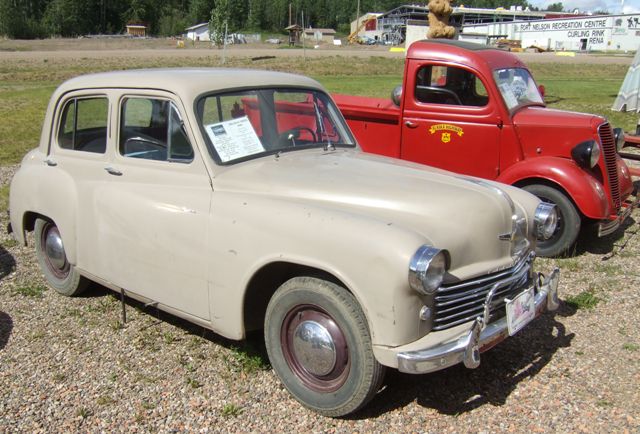 |
Much newer but just as fragile are these English vehicles outside. At the
front is a 1950 Hillman Minx with a Ford pickup to the rear. |
| A John Deere harvester
probably dating from the early 50s. | 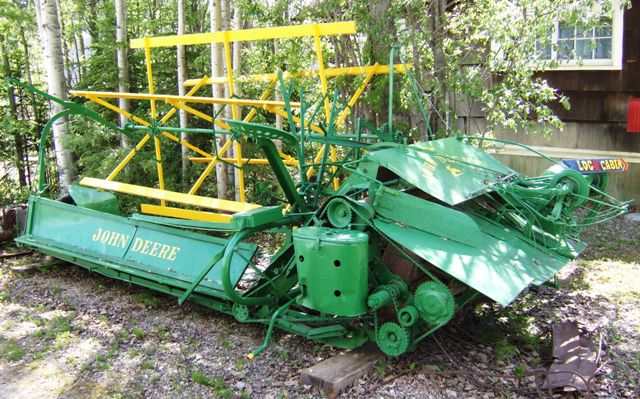 |
 |
A reminder that although it is sunny now, it can get fairly bleak in the
winter. |
| And a forerunner of the
snowmobiles we see today. |  |
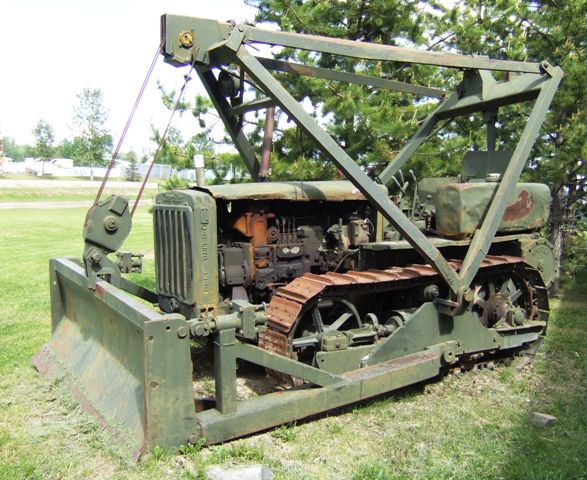 |
Since we are on the Alaska Highway, there is a lot of wartime construction
gear left here. About 11000 vehicles were used to build the it. |
| Not all belonged to the
army since one third of the workforce was civilian and the first rough
roadway was rebuilt almost immediately by civilian crews. | 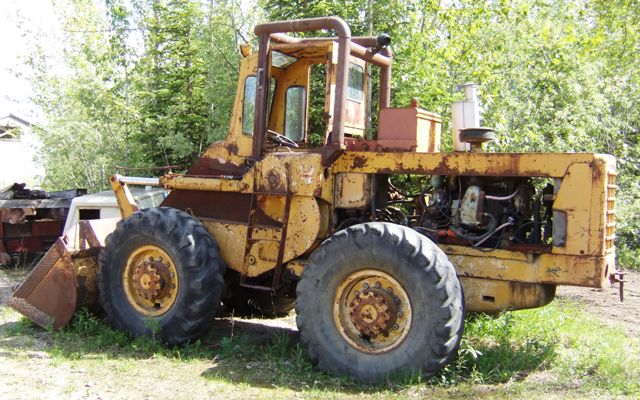 |
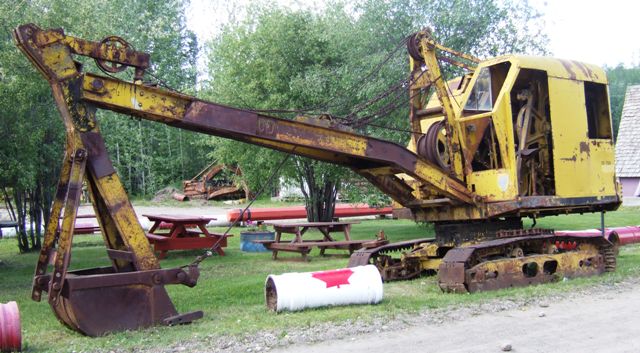 |
It wasn't all done with bulldozers. These shovels were commonplace too. JCBs
had not been invented in 1942. |
| The museum has about a
dozen of these in green and yellow, of varying sizes and in varying
conditions from workable to junk. | 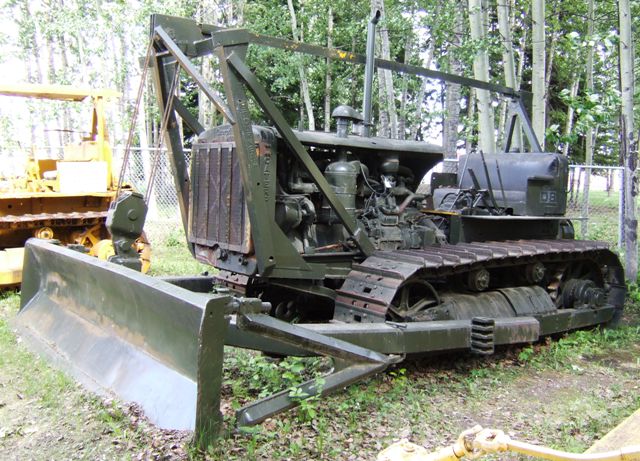 |
 |
Finally at the museum, a reminder of the impact of the oil industry here. |
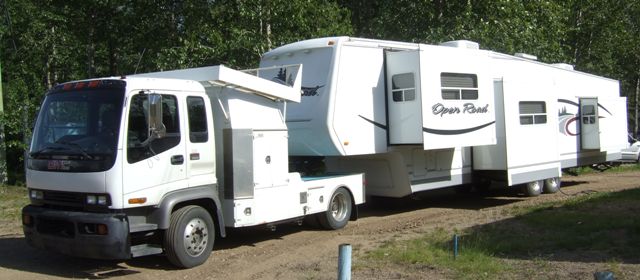 |
| While back at the campsite, when you have a 7½
ton trailer with three slideouts (on this side) you need a tractor unit to
pull it. The trouble is I only think it seats two - where does everybody
else sit? |
|